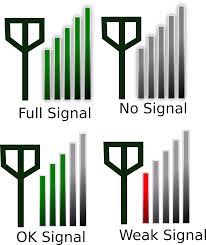
– Why Cell Phone Signal Weakens in Certain Buildings and Locations
Ever notice your phone signal vanish the moment you step into a parking garage or move to a certain corner of your office? It’s a common issue—and while it feels random, there’s a science behind why cell signal weakens in certain places. Let’s break it down.
Physical Barriers: The #1 Reason for Weak Signals
Cellular signals are essentially radio waves, and like all waves, they can be blocked or weakened by physical obstacles. Certain materials used in buildings are especially signal-unfriendly:
- Concrete and Reinforced Steel: These materials are great for strength and insulation but terrible for signal transmission. They absorb and reflect signals rather than letting them pass through.
- Metal Surfaces: Metal roofing, siding, or window frames act like shields, bouncing signals away.
- Energy-Efficient Glass: Low-emissivity (Low-E) windows and metal-oxide films designed to keep heat in also keep signals out.
- Underground Structures: Basements, subways, and underground parking lots are surrounded by signal-blocking earth and concrete, often cutting off reception entirely.
Distance and Environmental Factors
Even when you’re above ground, several other factors can interfere with signal strength:
- Distance from Towers: The farther you are from a cell tower, the weaker your signal becomes.
- Terrain and Landscape: Hills, dense forests, and even tall buildings between you and a tower can block or scatter signals.
- Weather: Storms, heavy rain, and thick fog can absorb or reflect signals, leading to temporary service degradation.
- Electronic Interference: Devices like cordless phones, baby monitors, and even microwaves can interfere with cell signal, especially indoors.
The Urban Paradox
Cities are packed with towers—but they’re also packed with buildings. Urban areas often create “signal canyons,” where cellular signals bounce unpredictably between skyscrapers. This can cause signal distortion or unexpected dead zones, even in places you’d expect strong coverage.
What You Can Do About It
If you’re stuck in a signal dead zone, don’t worry—there are solutions:
- Signal Boosters: Install a cell phone signal booster in your home, office, or vehicle. These systems capture weak signals and amplify them indoors.
- Wi-Fi Calling: Most smartphones and carriers now support Wi-Fi calling, which lets you make calls and send texts over your internet connection.
- Smart Building Design: If you’re building or renovating, consider materials and layouts that are more signal-friendly.
- Check Coverage Maps: Your carrier’s coverage map can help you understand expected signal strength in different areas—and might even inform which provider is best for your location.
The Bottom Line
Poor cell signal isn’t just bad luck—it’s often the result of very real, physical factors. By understanding what’s interfering with your reception, you can take steps to fix it. Whether it’s a signal booster, a change in settings, or simply moving closer to a window, knowing why your signal disappears is the first step toward getting it back.
NEW- Why Cell Phone Signal Weakens in Certain Buildings and Locations
Ever notice your phone signal vanish the moment you step into a parking garage or move to a certain corner of your office? It’s a common issue—and while it feels random, there’s a science behind why cell signal weakens in certain places. Let’s break it down.
Physical Barriers: The #1 Reason for Weak Signals
Cellular signals are essentially radio waves, and like all waves, they can be blocked or weakened by physical obstacles. Certain materials used in buildings are especially signal-unfriendly:
- Concrete and Reinforced Steel: These materials are great for strength and insulation but terrible for signal transmission. They absorb and reflect signals rather than letting them pass through.
- Metal Surfaces: Metal roofing, siding, or window frames act like shields, bouncing signals away.
- Energy-Efficient Glass: Low-emissivity (Low-E) windows and metal-oxide films designed to keep heat in also keep signals out.
- Underground Structures: Basements, subways, and underground parking lots are surrounded by signal-blocking earth and concrete, often cutting off reception entirely.
Distance and Environmental Factors
Even when you’re above ground, several other factors can interfere with signal strength:
- Distance from Towers: The farther you are from a cell tower, the weaker your signal becomes.
- Terrain and Landscape: Hills, dense forests, and even tall buildings between you and a tower can block or scatter signals.
- Weather: Storms, heavy rain, and thick fog can absorb or reflect signals, leading to temporary service degradation.
- Electronic Interference: Devices like cordless phones, baby monitors, and even microwaves can interfere with cell signal, especially indoors.
The Urban Paradox
Cities are packed with towers—but they’re also packed with buildings. Urban areas often create “signal canyons,” where cellular signals bounce unpredictably between skyscrapers. This can cause signal distortion or unexpected dead zones, even in places you’d expect strong coverage.
What You Can Do About It
If you’re stuck in a signal dead zone, don’t worry—there are solutions:
- Signal Boosters: Install a cell phone signal booster in your home, office, or vehicle. These systems capture weak signals and amplify them indoors.
- Wi-Fi Calling: Most smartphones and carriers now support Wi-Fi calling, which lets you make calls and send texts over your internet connection.
- Smart Building Design: If you’re building or renovating, consider materials and layouts that are more signal-friendly.
- Check Coverage Maps: Your carrier’s coverage map can help you understand expected signal strength in different areas—and might even inform which provider is best for your location.
The Bottom Line
Poor cell signal isn’t just bad luck—it’s often the result of very real, physical factors. By understanding what’s interfering with your reception, you can take steps to fix it. Whether it’s a signal booster, a change in settings, or simply moving closer to a window, knowing why your signal disappears is the first step toward getting it back.



